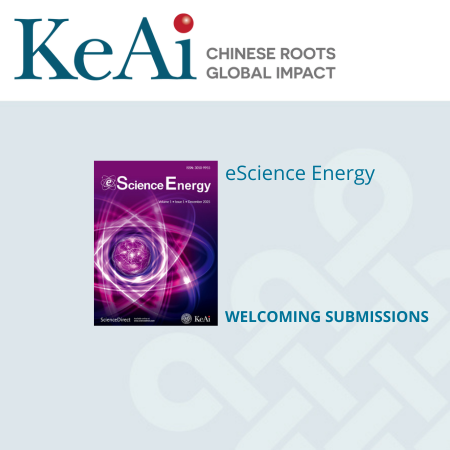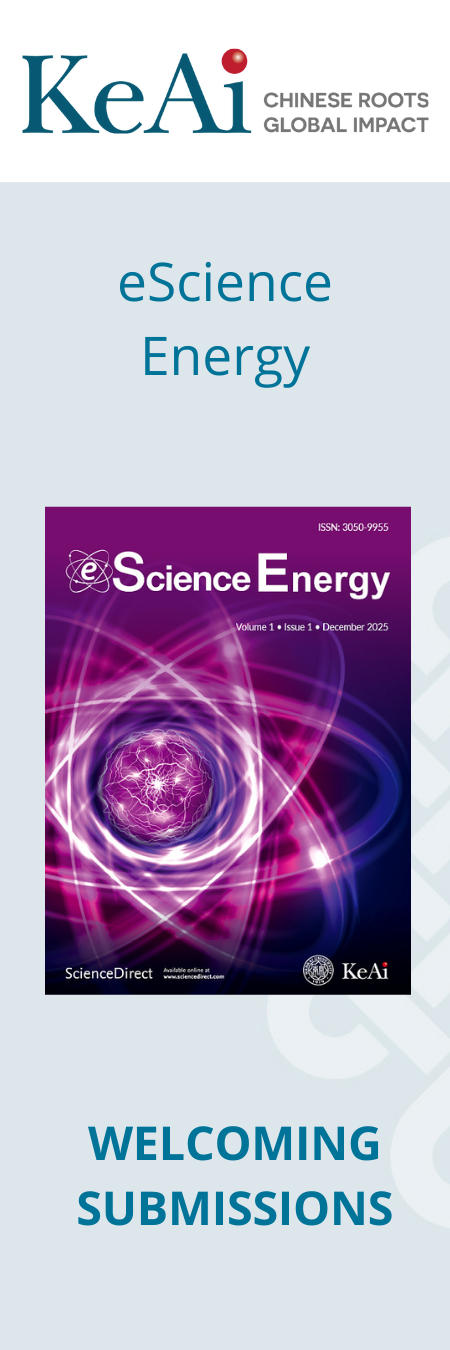Regulating lower hubbard band for tandem electrocatalytic lithium polysulfides conversion
January 2026
Catalytic conversion of lithium polysulfides (LiPSs) is a promising avenue to suppress the shuttle effect and enhance the redox kinetics of lithium–sulfur (Li–S) batteries. However, the consecutive...
Mutual stabilization of hybrid and inorganic perovskites for photovoltaics
January 2026
Stabilizing black-phase formamidinium lead triiodide (FAPbI3) is critical for high-performance perovskite solar cells (PSCs). We present a stabilization strategy utilizing co-evaporated cesium lead...
Heartbeat electro-language: Exploring piezoelectric technologies for cardiovascular health monitoring
January 2026
Cardiovascular diseases remain the leading cause of global morbidity and mortality, underscoring the urgent need for advanced technologies capable of continuous, noninvasive, and intelligent monitoring....
Mechanically and chemically robust ultrahigh-Ni cathodes enabled by localized cation disorder design
January 2026
Layered oxide cathodes play a crucial role in developing high-energy-density Li-ion batteries. However, limited by weak interlayer support and poor oxygen stability, the ordered structure is easily...
Manganese-containing electrocatalysts for sustainable acidic oxygen evolution
January 2026
Proton exchange membrane water electrolysis (PEMWE) is recognized as an advanced technology for green hydrogen production and renewable energy conversion. However, the prohibitive cost and limited availability...
Understanding the electro-chemo-mechanics of lithium metal anodes
January 2026
Lithium metal batteries (LMBs) are candidates for next-generation energy storage due to their potential to increase energy density. However, the nonuniform electrodeposition of Li during cycling, plus...
Heterointerface photo-electron effect in VO2(B)/V2O5 nanocomposite under long-wave infrared illumination for high-temperature microbolometers
January 2026
This study introduces a VO2(B)/V2O5 nanocomposite thin film, fabricated via low-temperature sputtering (< 300 °C), as a high-performance thermistor material at high temperatures up to 125 °C for long-wave...
Longitudinal confinement engineering in phase change materials
January 2026
Amidst escalating energy demands and intensifying environmental pressures, advanced phase change materials (PCMs) have emerged as highly efficient and sustainable storage solutions, owing to their unique...
Catalyst and gas diffusion electrode design toward C–N coupling for urea electrosynthesis
January 2026
The electrocatalytic C–N coupling reaction involving carbon dioxide (CO2) and nitrogenous small molecules has recently emerged as a subject of considerable interest within the field of urea synthesis....
Photo-electroactive p-n heterojunction catalyst with dual Co sites for high-performance light-enhanced zinc–air batteries
January 2026
Highly electrocatalytic and durable Co-Nx-C frameworks containing carbon nanofibers (CNFs)/carbon nitrides (CNs) are vital materials for rechargeable zinc–air batteries (RZABs). However, the existing...
Chemical inhibition of light-induced decomposition by hindered amine for efficient and stable perovskite solar cells
January 2026
Despite significant advancements in improving the power-conversion efficiency (PCE) of exceeding 27% in perovskite solar cells (PSCs), the insufficient operational stability of PSCs under illumination...
Achieving high-voltage polymer-based all-solid-state batteries based on thermodynamic and kinetic degradation insights
January 2026
Understanding the mechanisms behind the degradation in cyclic stability of polymer-based all-solid-state batteries (ASSBs) at high voltages is important for facilitating their commercial application....
Electron-funnel mediated anion confinement enables ultra-reversible interphases in solid-state batteries
January 2026
Solid-state lithium metal batteries face challenges from irreversible interfacial degradation and sluggish ion transport. We propose an electron-funnel-mediated anion confinement strategy via atomic-level...
Concentration-gradient driven atom diffusion to synthesize high-loaded and sub-5 nm PtCo intermetallic compound for fuel cells
January 2026
The synthesis of Pt intermetallic compounds (IMCs) typically necessitates high-temperature annealing to overcome the atom-diffusion kinetic barrier, which inevitably results in considerable nanoparticle...
Interface-engineered metalized plastic current collectors for fast-charging lithium-ion batteries with high safety and stability
January 2026
Adopting the metalized plastic current collector (MPCC) enhances the safety and specific energy density of lithium-ion batteries (LIBs) but sacrifices the rate capability. The reduced rate capability...
Carbon dots: Electroluminescent devices for lighting and display applications
Available online 22 December 2025
Carbon dots (CDs) have garnered significant attention as next-generation optoelectronic materials due to their tunable photoluminescence, low toxicity, cost-effectiveness, and excellent photostability....
Composition-driven anion vacancy control in I–III–VI CuIn(S1−xSex)2 quantum dots for efficient photoelectrochemical hydrogen production
Available online 22 December 2025
Heavy-metal-free I–III–VI quantum dots (QDs) are promising candidates for solar energy conversion owing to their strong light absorption, broadly tunable bandgap spanning the full solar spectrum, and...
A high-energy long-cycling solid-state lithium–oxygen battery enabled by plasmon-enhanced solar induced reversible oxygen conversion to Li2O
Available online 18 December 2025
Lithium–oxygen (Li–O2) battery with a reversible conversion between oxygen and lithium oxide (Li2O) offers the highest theoretical specific energy among all lithium-battery systems. However, enabling...
30 years of AI for electrocatalysis: Where we are and what's next?
Available online 17 December 2025
Artificial Intelligence (AI) has evolved over the past three decades from the initial pioneering stage to become a transformative force in electrocatalytic research yet is far from realizing its full...
Hydroxide-activated hydrogen spillover-mediated nitrogen reduction pathways for efficient ammonia synthesis
Available online 13 December 2025
Developing novel reaction mechanisms to simplify the nitrogen reduction reaction (NRR) pathways and break scaling relationships of catalysts remain challenges in improving catalytic efficiency. Here,...
Far-field RF-powered closed-loop bioelectronic system for enhanced wound healing and connected healthcare
Available online 13 December 2025
Skin wounds caused by trauma, surgery, or disease remain a significant clinical challenge, under-scoring the need for innovative strategies to promote tissue repair and regeneration. We present a wireless...
Coupled optimization of electronic and lattice structure for sodium storage stability in layered sodium vanadate cathodes
Available online 9 December 2025
Layered sodium vanadate has attracted considerable attention as a promising cathode material for sodium-ion batteries, due to its multiple accessible vanadium valence states and large interlayer spacing....
Supramolecular chemistry of cellulose-based electrolytes
Available online 9 December 2025
Cellulose has garnered significant attention in material science and energy storage due to its unique supramolecular structure and excellent mechanical properties. In particular, cellulose-based electrolytes...
Promoting atomic ordering of intermetallic fuel cell catalysts by phase transition engineering
Available online 7 December 2025
High-temperature treatment generally promotes the atomic ordering transition (AOT) of alloys that easily results in the sintering behavior of catalysts. We demonstrate a novel phase transition induction...
Spinel nanodomains relieve strain and stabilize lattice oxygen in ultrahigh-nickel zero-cobalt cathodes
Available online 5 December 2025
Ultrahigh-nickel, zero-cobalt layered oxides are emerging as promising cathodes for next-generation lithium-ion batteries combining high capacity and cost effectiveness. However, the high nickel content...


